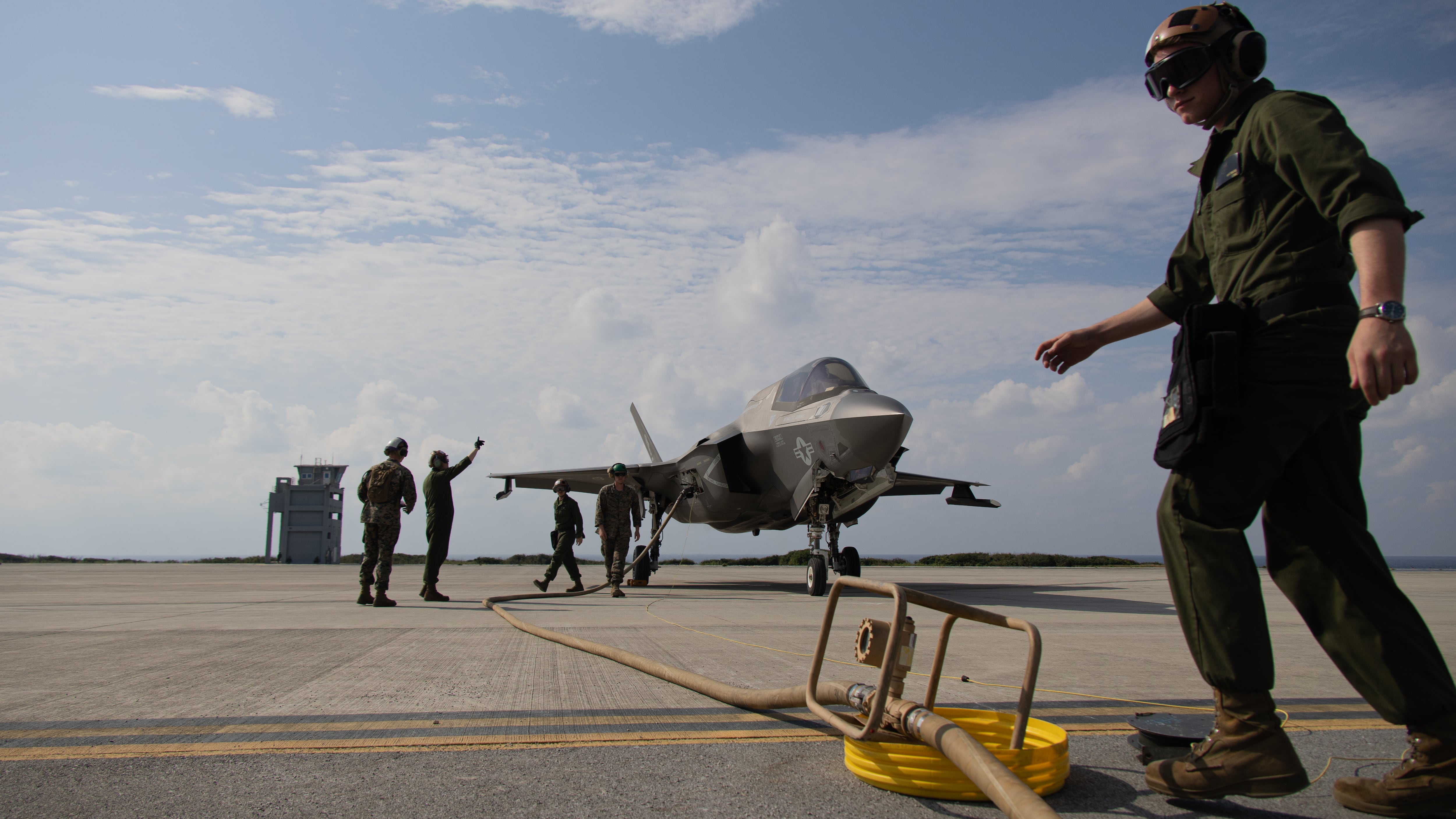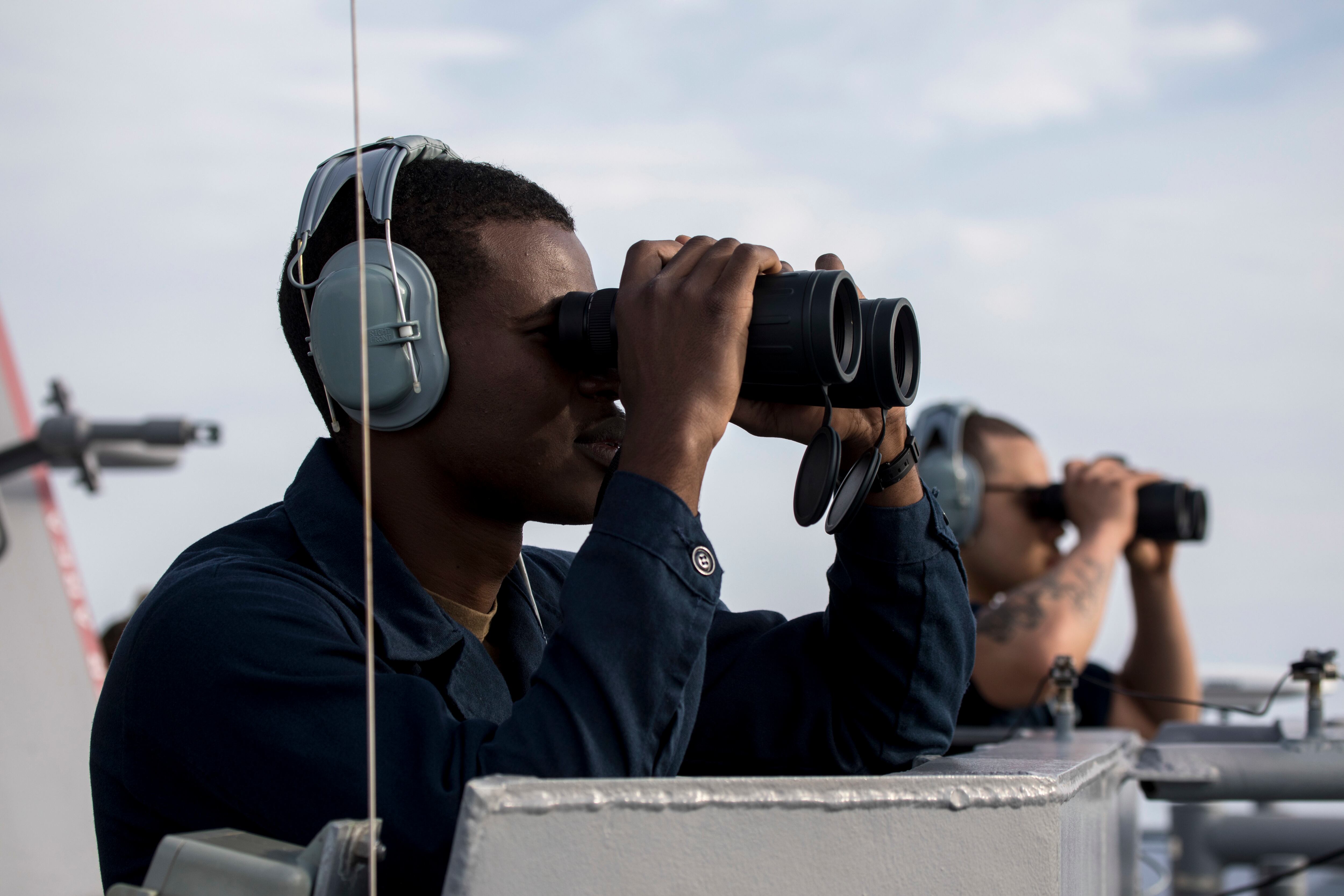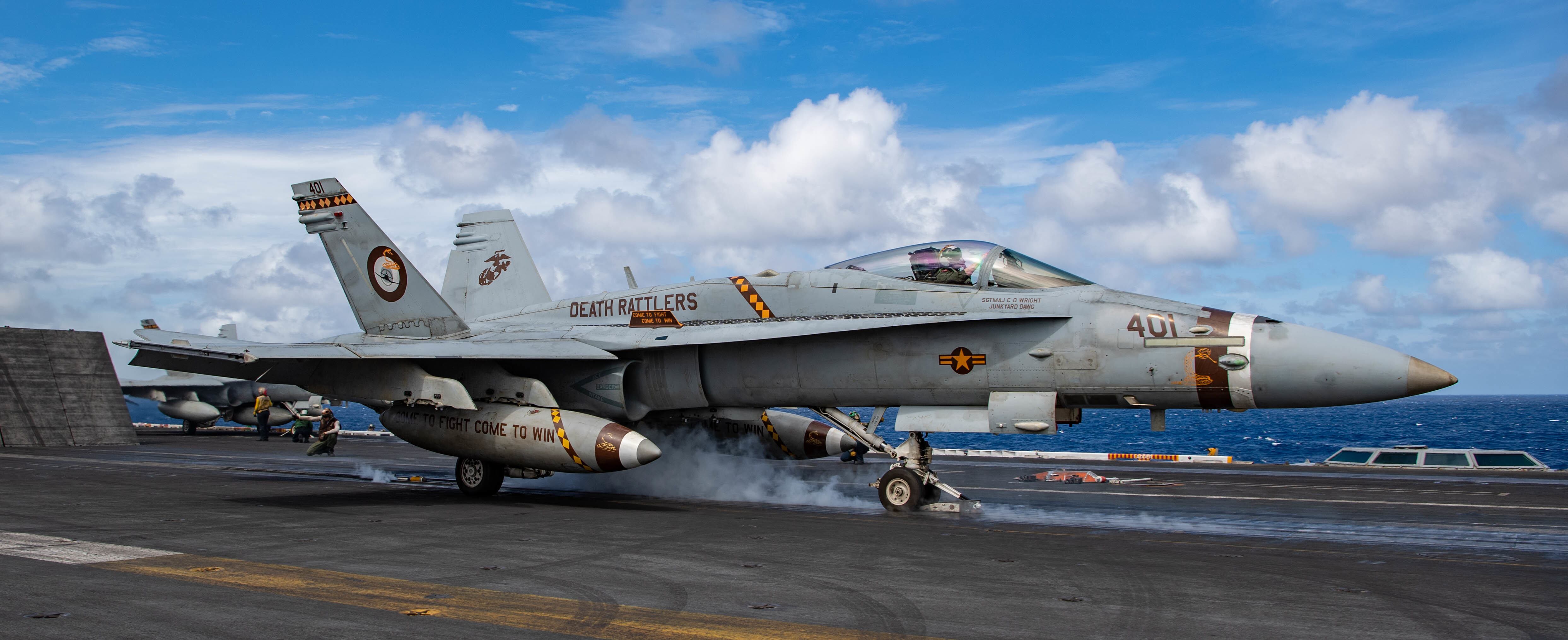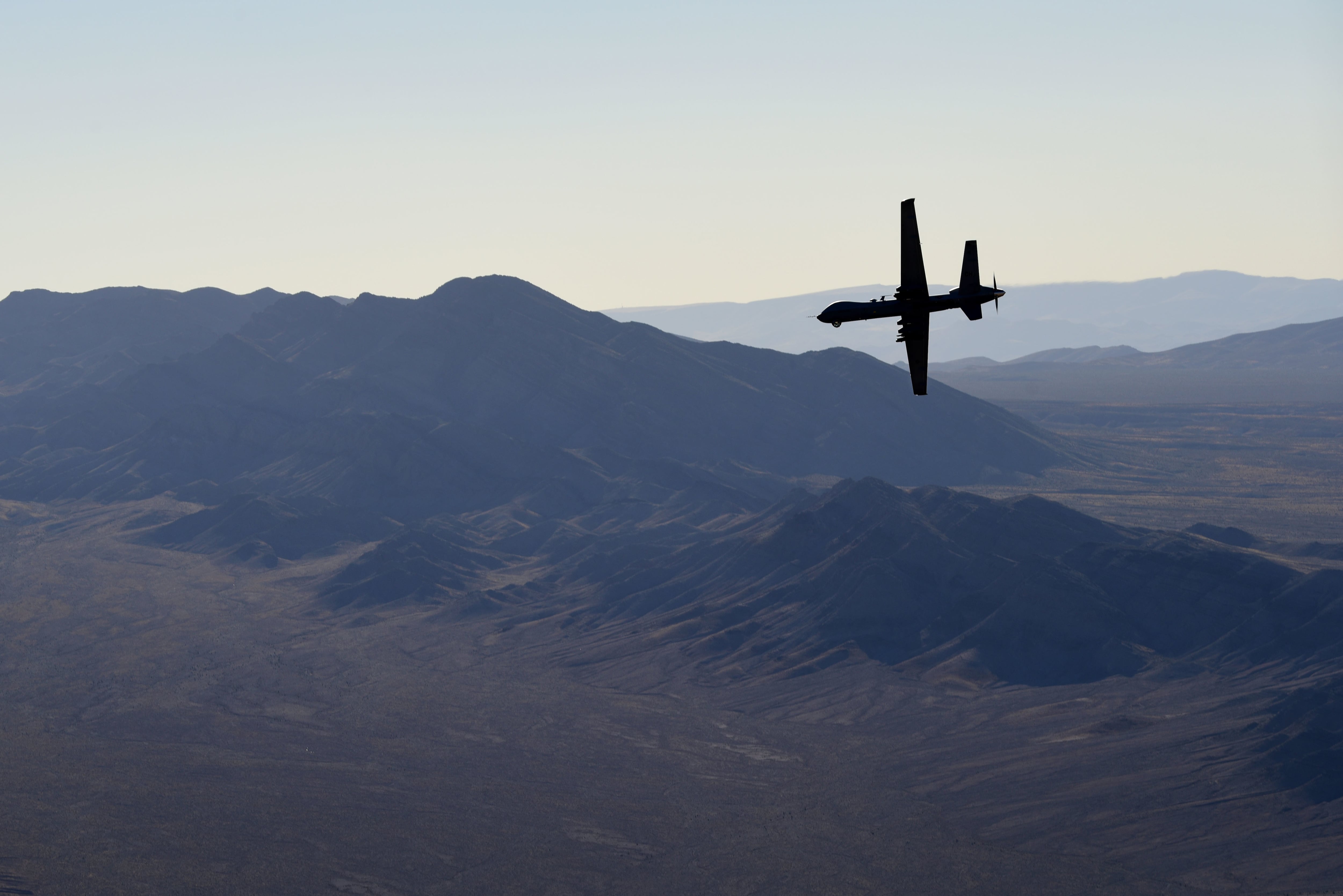The Marine Corps has been swapping out traditional tools for what some leaders see as a vastly different form of warfare in the coming decades: the Corps has been shedding tanks, reducing tube artillery, cutting law enforcement while adding rocket artillery and transforming infantry-centered regiments.
Those changes have rolled through the Corps over the past three years. But the heart of the service’s success, many current and past leaders say, is its Marine air-ground task force concept.
The “air” part has remained in a holding pattern as top aviators rethought how the air side will fit into the new Force Design 2030 plan.
In early May, the Corps’ top aviators released the service’s aviation plan, its first in nearly three years after what had been an annual report.
RELATED

Some of the work remains the same — support the MAGTF with aviation for sensing, strike and hauling Marines and their gear around the battlespace.
But, as Commandant Gen. David Berger signaled in his 2019 planning guidance, significant changes are afoot.
Marine Corps Times researched key themes in the aviation plan with responses from Marine Corps headquarters and interviews with retired Marine experts and a former top aviator, three-star general and prior commander of Combat Development and Integration.
The target year, 2030, is fast approaching as the Corps looks to push aviation into the next fight.
Highlights include exquisite sensor-laden platforms such as the F-35 jet, heavy hauling capabilities in the CH-53K helicopter, long-range fires, sensor and transport support in the KC-130J tanker and a long-overdue step into unmanned platforms that hold great promise for those future operations.
But questions loom on how the Corps will manage the transition from current aging aircraft such as the F/A-18 and AV-8 Harrier to newer but fewer replacements, and if the toe-in-the-water approach to drones is enough to get the service where it wants to go.
“Change is not easy, even if the outcome is of superior quality and abilities,” Maj. Jorge Hernandez, spokesman for the Deputy Commandant of Aviation Lt. Gen. Mark Wise, wrote in an email response. “To ensure a successful transition of this scale will require an all-hands effort for Marine Corps aviation.”
A Force Design focus
Wise laid out a plan, in a May 2 roundtable with reporters, which his team built to guide the direction of Marine aviation in the coming years. The work involved war games, experimentation and hard thinking.
In each phase of modern warfare, new aviation technology has pushed fliers and flying capabilities into new areas.
Berger said so himself in his 2019 planning guidance. He specifically cited experimentation with “lethal long-range unmanned systems capable of traveling 200 nautical miles.”
The top Marine envisions small teams on tiny islands. They’ll sneak around, gather crucial data, pop up to launch an anti-ship missile — then disappear only to reemerge at another location, gathering and harassing.
The aviation role here is under construction as the force experiments.
Mark Cancian, a retired Marine colonel and senior adviser at the Washington think tank Center for Strategic and International Studies, sees a reduced aviation footprint in the current plan. Though that coincides with a reduction in the number of infantry battalions that aviation supports, he sees it as disproportionate.
“Everything is getting smaller as the number of infantry battalions go down,” Cancian said.
Another retired Marine, Lt. Gen. Bruce Knutson, who spent more than four decades serving the Corps both as an active-duty officer then as an official senior adviser post-retirement, said tinkering with aviation can have an outsized impact.

Most people, even Marines, don’t understand the role of Marine aviation, he said. It is not a small air force. It is the mobility and striking power of the MAGTF.
The air power enables that task force operation, which is how Leathernecks do business.
“You start taking things away from Marine Corps aviation, it’s a lot more significant, a lot more serious than if you start downsizing a battalion,” Knutson said.
The retired three-star commanded a then-young Capt. David Berger when the senior Marine headed 1st Marine Aircraft Wing in the early 1990s. He also knows and respects Wise, he said. But he fundamentally disagrees with the current approach to force design and the warfighting concept it supports.
The core of the Corps’ fight is to do long-range reconnaissance and strike with small, disparate units.
“The Marine Corps, I don’t think ought to be in that business,” Knutson said.
The transition
One notable transition that aviation plan authors note themselves is the strain that transitioning from old platforms to new platforms creates.
Both the technology and the personnel will face such challenges. Wise pointed out in his talk with reporters that the F/A-18 community provides more than half of all tactical air requirements that the Marine Corps delivers both for the service and joint commitments.
Its replacement is coming, but that takes time. The service is about a third through fielding F-35B fighter jets.
“Starting to capitalize on this aircraft as more than just a fighter,” Wise said. “It has a sensor suite that is extraordinary, it’s like nothing we’ve ever had before.”
RELATED

The hope is that the advanced capabilities will give far more to units that have the F-35 at their back as compared to the decades-old F/A-18.
Wise said that F-35B squadrons have been reduced from 16 to 10 aircraft. That shift provides 10 airplanes in the deployment cycle, with two in a backup role and leaves room for maintenance and attrition.
“That is the model that we believe is the right direction to go for the (Marine Expeditionary Unit),” Wise said. “That way you’re deploying a whole squadron as well. You’re not leaving pieces behind.”
That’s a reference to breaking up squadrons, which can strain support and basing, to meet various area tactical needs.
But all platforms, especially fighter jets and heavy lift helicopters, Cancian sees problems.
These aircraft need sophisticated support crews and equipment to remain airborne. Not all of that can be done at sea.
“The point I get stuck on is, how are you going to base them?” Cancian said.
The goal is for 18 active and two reserve F-35 squadrons, or a total of 420 advanced fighters. The juggling act will come with moving F/A-18 and Harrier pilots to the F-35 cockpits and ensuring a steady flow of new F-35 pilots coming into the force.
Current F-35s pilot manning sits at about 40%, which parallels with Wise’s one-third fielding comment. Current training schedules project
500 F-35 pilots on the job (they’ve got 197 pilots now) for a target of 420 aircraft.
Knutson knows how transitions work.
The former aviator entered the Corps in 1969 and retired in 2001. During that time, he started out flying the F-4 Phantom and transitioned to the F/A-18 in 1991.
He agrees that the F-35 “is a whole new game,” for aviation. But there are other considerations.
“You could have the 100 best airplanes in the world but have requirements to be in 200 different places, then they don’t have enough airplanes,” Knutson said.
Those transitions, all admit, create strain.
“You continue to tax and use the community a lot and cut back on funding…you have the potential for both stress and danger,” Cancian said.
Vertical lift & long-range support
In the close fight, Marines long have relied on helicopters or other vertical lift forms like the MV-22 Osprey.
The aviation plan calls for a cut to the Osprey fleet. Instead of 14 squadrons of a dozen aircraft each, their new plan calls for 16 squadrons of 10 aircraft each. The shift removes eight Ospreys from the total aircraft fleet.
Knutson said the Osprey provided previously unheard-of operational depth to MAGTF commanders, multiplying the distance from about 30 miles to more than 200 miles.
“We cut the MV-22, we’re cutting at the heart of maneuverability,” Knutson said.
The decrease of 24 to 21 infantry battalions is a drop of about 13%, Cancian said. The light helicopter attack squadron reduction, as one example, nearly double at nearly 23%.
“I think that short-range helicopters just don’t fit this new version of the Marine Corps,” Cancian said.

That’s because of the range. Distances in the Pacific, especially puncturing the weapons reach of China, are farther than those aircraft can fly.
When asked about potential gaps in rotary wing capacities, Hernandez responded that the Corps would continue upgrades to existing platforms and others to fill the needs that these platforms provide.
“This is a multi-prong approach in leveraging the myriad capabilities Marine Corps aviation provides the MAGTF,” he wrote.
Unmanned Future
To cover the tactical support, sensor, strike assault and hauling, the Corps leans hard on unmanned assets. But there’s a problem.
“Right now, the Marine Corps planes for unmanned is incomplete and quite inadequate,” he said. “I keep beating up the Marine Corps about the small size of its UAV fleet.”
The leap-ahead answer was the MAGTF unmanned aerial system expeditionary, or MUX. This high-level, ship-based, do-it-all drone would have run nearly the whole battle space, serving as a node to link all fires to the fingertips of a single Marine on the ground.
It would have given advanced sensor, electronic warfare and a host of other options, too.
But Congress balked at the project. Instead, the Marines did what Marines do — found a cheaper entry point.
That meant acquiring the MQ-9 Reaper drone: a big advance for Marines but old news for the rest of the services. The platform has been running since 2001. As of April, Jarheads had two MQ-9s in the fleet. The goal is to field 18 MQ-9s by 2025.
That’s more than two. But, as Cancian’s analysis in published reports shows the Army has 201 Group 5 drones while the Air Force sports 351.
“They are way behind and have no plan to catch up,” Cancian said. “This is a minimalist approach.”
Berger’s plan calls for as much as 40% of all Marine aviation to be unmanned in the coming decade, Cancian said.
These moves won’t get the Corps where it wants to go fast enough, both Cancian and Knutson said.
“If they want to continue down this road, they ought to do an appraisal, full court press, we need a crash course, we need to get into UAVs and we need to do it in a hurry,” said Knutson.
RELATED

But aviation leaders are cool to this.
Wise and his staff explained that the MQ-9 is far from the end state. In fact, they’re developing capabilities, such as electronic warfare, on the platform but independently. That way, the advancements can fit onto whatever flies them in the future.
Hernandez’ response to Marine Corps Times noted that MQ-9 experimentation begins in fiscal year 2023. Areas include using the platform as a “network gateway” to pass information, airborne early warning, autonomous takeoff, landing and hazard avoidance as well as cyber-secure C2 data links.
In other words, they’re still pursuing MUX, just not with a nice, new platform … yet.
Opening photo by Lance Cpl. Becky Cleveland/Marine Corps.
Todd South has written about crime, courts, government and the military for multiple publications since 2004 and was named a 2014 Pulitzer finalist for a co-written project on witness intimidation. Todd is a Marine veteran of the Iraq War.





